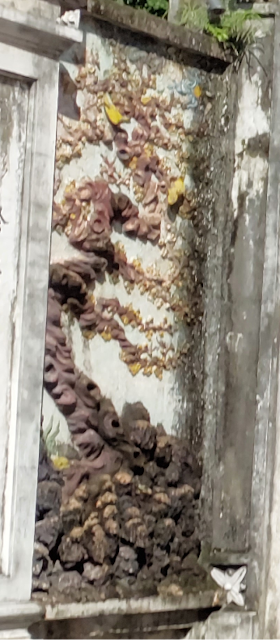Wat Traimit is a very old temple which was known as "Wat Sam Jeen Tai" earlier. It is a Royal temple and houses an enormous gold image of Buddha.
History of wat:Located in the China Town of Bangkok, Wat Traimit Withayaram Wora Vihara was originally built in 1832. It was called Wat Sam Chin or Jeen (Three Chinese Temple) after three Chinese donated their property to build the temple. The temple is often referred as Wat Trimitre, meaning three friends.
In 1929, the name was changed to Wat Traimit Witthayaram and it became a royal temple in 1956.
Origin of image:
The origin of the image is not known but is said to have been cast in India since it is made of nine pieces which fit together. It is said to have a key which helps in easy assimilation of parts.
Moreover, the face is oval in shape in contrast to round face which were made later.
It was cast during Sukhothai period which thrived in Northern Thailand between 1238 and 1438. After its fall and rise of Ayutthaya Kingdom from 1350 to 1767, the image was relocated in a temple there.
When Burma invaded and destroyed Ayutthaya (1765-67), the Golden Buddha was covered with a plaster so to protect it from being stolen.
Soon after, assuming that the image was made of plaster, it was ignored and forgotton.
In 1737, King Rama I established the Chakri dynasty and made Bangkok its capital. He got all the valuable Buddha images from Sukhothai and Ayutthaya to Bangkok to prevent the looming threat of Burma. It was at the same time when the Emerald Buddha was shifted from Chiang Mai to Bangkok.
The image arrived in Bangkok still covered with stucco during the reign of Rama III (1824-1851).
Image installed:
- The stucco covered image which was painted and covered in glass pieces was shifted to Wat Chotanaram or Wat Phraya Krai in Bangkok.
- Soon, this wat started crumbling, the image was so huge that no one was willing to welcome it. The abbot at Wat Traimit decided to build a place to house it.
- It was moved to Wat Traimit in 1935 still covered in plaster but since it was so huge, it was kept under a tin shed. It remained there for almost 20 years.
- In 1954, a new vihan was made to install the huge image. In 1935, while the image was being lifted, one of the ropes broke, part of the plaster came out revealing the golden image inside.
- In 2008, the present building of three floors was made to house the gold image.
The building has three floors:
- first floor has a museum and since the wat is in Chinatown, it tells the history of Chinatown and the Chinese immigrants in Bangkok.
- the second floor has a museum which walks you through the history of Golden Buddha. Pieces of coating or plaster are on display.
- the third floor has Phra Maha Mondop which houses the image of Golden Buddha
Features of Golden Buddha:
- The main image Phra Maha Suwan Patimakorn or Luang Pho Thongkham or Phra Sukhothai Traimit is of pure gold and is said to be biggest solid gold Buddha image in the world.
- The statue is 3.01 meters wide in lap size and is 3.91 meters tall.
- As already mentioned above, the image is in 9 removable parts, maybe that made transportation from India easier.
- The body is 40% gold but the face is 80% gold.
- the top knot on Buddha's head is 45 kg which is 99.99% gold.
- the image sits in bhumisparsha mudra, that is calling the earth to witness his enlightenment.
The complex has a learning school, ubosot and also a public school, "Traimit Vidyalaya"
entrance ticket to Maha Mondop. In case, one decides to see the museum, additional ticket for 100 Baht needs to be bought.
The museum is closed on Mondays, sadly the day we visited :(
Bronze reliefs:
There are two bronze reliefs on either side of stairs on the second floor.
Top part of the relief shows Phra Mae Thorani or Mother Earth Goddess(Dharini) wringing her hair to drown Mara, who tried to distract Buddha in his meditation. Buddha requested Mother Earth to come to his rescue.
On the side is Garuda with seven-headed Nagaraja who holds on to a woman who is getting washed away by the flow of water.
The bottom part of relief shows Airawat or Irawan with Indra.
The other relief shows subdued Mara with her army
bell pavilion
Phra Maha Suwan Patimakorn or Luang Pho Thongkham or Phra Sukhothai Traimit
The huge image of Buddha sits on a white lotus in Bhumisparsha mudra, his right hand touching the earth and the other on his lap.
On his either side is a seven headed naga.
praying in front of image
door of vihan
rules to be followed
Naga and elephant headed lion or Yali at entrance
another bell tower on the other side
richly decorated entrance and gable
Ubosot:
Across the mahamondop is ubosot.
King Chulalongkorn or King Rama V once paid a homage to this place.It was an afternoon well spent and we enjoyed the quiet environment of the place.





















































